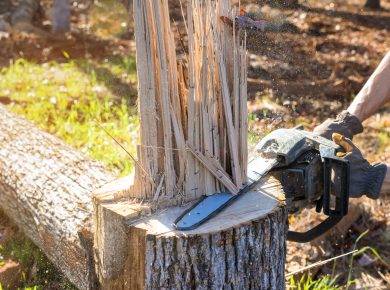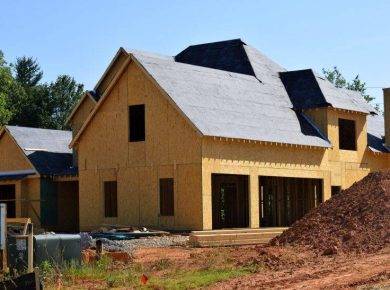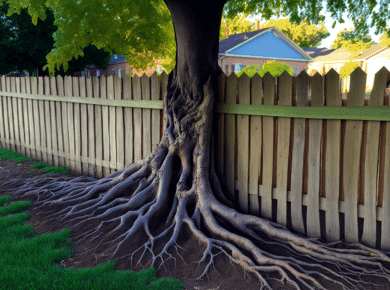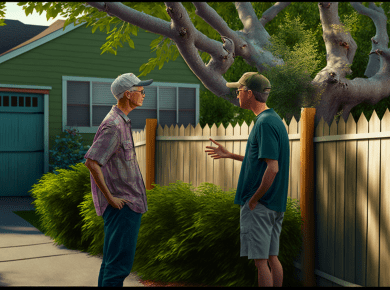Table of Contents
- A neighbor cut down my tree in North Carolina
- My neighbor cut my tree in North Carolina
- My tree branches overhang my property in North Carolina
- My neighbor damaged my tree on my property in North Carolina
- My neighbor’s tree roots or branches damaged my property in North Carolina
- Can my neighbor make me cut my tree?
- How can I get my neighbor to cut his dead tree in North Carolina?
- What happens if I cut my neighbor’s tree down in North Carolina?
- If a tree is cut down on my property by a neighbor how much money should I receive in damages?
- If your property was damaged click here to see if you might have a case.
In North Carolina, if someone trespasses on a property, damages or destroys the property of an individual, or does something else to interfere with an individual’s rights, the person will generally be responsible for the damages if a court finds him or her guilty of the violation. Not all trees are protected, though all growing things are by default. If a tree is planted on your side of the fence line you have an easement, or legal right to be able to access that tree.
If your neighbor cut down your tree and damaged your fence line in any way, he may be legally obligated to pay restitution. This means that he may need to repair your fence line at his own expense and compensate you for any financial losses that you suffered.
The principle of law protects individuals from being sued for a wrongful act when they have not actually caused damage to the property in question. This principle applies unless the individual is doing something to cause damage to someone else’s property, such as cutting down a tree on a plot of land where it is clear that he does not have the right to cut down the tree.
A neighbor cut down my tree in North Carolina
Heading: What to Do If a Neighbor Cuts Down Your Tree in North Carolina
Description: Learn how to handle a situation in which a neighbor cuts down your tree in North Carolina and get in touch with a lawyer in your area who practices in these cases.
North Carolina residents may be disturbed to find out that a neighbor has illegally cut down one of their trees. This can be an emotionally and financially costly ordeal, especially if the tree had grown on your private property. Unfortunately, many don’t know what to do when this happens. Here’s a guide to help you understand what to do if a neighbor cuts down your tree in North Carolina.
First, call police immediately. They can take a formal report, take photos of the scene and locate the individual who is responsible. The police can also provide any evidence if litigation is necessary.
Second, assess the damage. If the tree was on your personal property, your neighbor may be liable for the cost of replacing the tree. In addition, you could claim damages for the loss of its aesthetic and privacy benefits.
Third, contact a lawyer in North Carolina who practices in these cases. A trained professional can advise you on your ability to sue for damages and how to approach the situation. It’s important to understand your rights when dealing with a neighbor who has illegally removed trees from your property.
Finally, you may discuss the situation with your neighbor and try to come to an agreement without getting legal help. If you can both come to a mutual agreement regarding the cost of replacement and other potential damages, then you may be able to avoid costly and lengthy litigation.
Taking legal action against a neighbor in North Carolina who has cut down one of your trees is not something to take lightly. In order to ensure that your rights are protected, contact an experienced lawyer in your area who practices in cases like yours. You may be able to get restitution and justice for what happened on your property.
My neighbor cut my tree in North Carolina
When a tree belonging to one landowner is growing over the property line of another landowner in North Carolina, there are steps a neighbor can take to address the situation.
If the trunk of the tree or a branch of the tree is located on the other landowner’s property, then the neighbor may legally be allowed to trim the tree in order to maintain their property line. In the situation of a shared fence, the cutting of the tree should be done gently and cut the branch no further than the property line.
In many cases, a landowner may not be able to trim the trees growing on another’s property. In this situation, communication with the other neighbor is recommended. By talking directly to the person who owns the tree and asking for permission to trim the tree, it allows for a much more peaceful resolution than trimming the tree without notice.
If the other landowner does not give permission for the tree trimming, then legal action may be pursued. This can be done by filing a civil suit in County Court. A court will make the decision of whether or not a landowner is entitled to remove or trim a tree growing on another’s property.
In either case, cutting or reaching an agreement to trim a tree that has grown over the property line should be done with a sense of respect. Agreements should be documented in writing and signed by both parties to avoid future disagreements.
North Carolina’s laws provide protection to trees and plants growing in one’s property. As a general rule, they should not be cut or trimmed without agreement of the other party or, if that isn’t possible, a court order.
My tree branches overhang my property in North Carolina
One of the most common property issues in North Carolina is a situation where tree branches overhang a property owner’s property. Depending on who owns the tree and the location of the property, this can be a challenging issue to resolve.
Step 1: Determine who owns the tree
The first step in dealing with overhanging tree branches is to determine who owns the tree. If the tree is on a neighbor’s property, then the neighbor is the owner of the tree and responsible for any branches that extend over the boundary line. The opposite is true if the tree is on the property owner’s land. The property owner is then responsible for any branches that overhang the neighbor’s property.
Step 2: Contact the owner
The next step is for the property owner to contact the tree owner and discuss the issue. Depending on the relationship between the two parties, this may be a straightforward conversation or a heated dialogue. If the situation cannot be resolved amicably, then the property owner should contact the city or county manager’s office for advice.
Step 3: Take legal action
If the issue is not resolved by talking with the tree owner, the property owner may have to take legal action. This may be as simple as filing a complaint with the county or city government to have the tree owner prune the offending branches. In some cases, the property owner may have to file a civil suit against the tree owner to seek compensation for damages or to force the tree owner to remove the offending branches.
By following these three steps, the property owner can hopefully resolve the issue of overhanging tree branches in North Carolina. It is important to remember that the property owner’s local laws may provide additional remedies to seek relief. Consulting with a local attorney can provide a property owner with the best course of action for their particular situation.
My neighbor damaged my tree on my property in North Carolina
If your neighbor has damaged one of your trees on your property in North Carolina, there are certain steps you can take to address the issue.
1. Take photos. Before you take any further steps, take photos of the damaged tree. This will provide evidence should the matter need to be addressed in court.
2. Talk to your neighbor. If you feel comfortable doing so, speak with your neighbor to see if they are willing to pay for damages. Make sure to negotiate a payment plan that is amenable to both parties.
3. Send a letter. If your neighbor is unwilling to cooperate, you can send them a demand letter outlining the costs of the damages and any compensation you are expecting.
4. Seek legal advice. You can seek legal advice in order to understand your rights and take the necessary steps to get monetary compensation from your neighbor for the damaged tree.
5. File a civil lawsuit. If all other steps have failed, you might need to file a civil lawsuit in order for the court to award you damages for the tree.
By following these steps, you can hopefully find satisfaction in the matter and receive any compensation you are due.
My neighbor’s tree roots or branches damaged my property in North Carolina
If branches or tree roots from your neighbor’s tree on their property extends over, or onto your property in North Carolina, your lose or damage may be legally recoverable for breach of the North Carolina Tree and Fence law (S.E. 2-35). State law does not require a land owner to trim or remove any trees, plants, or shrubbery, but does provide for liable for certain damages that result from negligence.
To begin, document the condition of the property before the damage occurred and all repairs needed afterwards. This should include photos of the property and all damages, including measurement of the property or damage, repair costs, discarded items, and replacement items.
For a successful damage claim in this situation, it is important to understand the difference between a negligence claim and a nuisance claim. A negligence claim is when your neighbor was negligent in removing a tree or branch, or failed to properly care for or maintain the tree/property/structure, that then caused the damage. On the other hand, a nuisance claim is when a tree or branch was maintained or cared for, but caused damage due to the natural growth or growth habit.
Keep in mind that the North Carolina tree and fence law does not describe legal action that can be taken for aesthetic or landscaping concerns, only when it comes to property damage or trespass that’s caused by the tree or branch that belongs to your neighbor.
The first step after documenting all damages is to contact your neighbor. Explain what happened and include any proof of damages and make sure to be as specific as possible. If your neighbor does not make amends for the damage, you’ll need to file a lawsuit to seek legal action for your damages.
If your neighbor does make amends for the damage, always create a written record of the agreement with witnesses. This document prevents future disputes between you and the neighbor and protects both your interests.
If the damage is above a certain amount, you’ll need to check with your local court clerk to see if there is a monetary limit on filing a case. A dispute resolution such as mediation or arbitration may also be necessary to avoid settling in court.
By understanding the North Carolina tree and fence law, documenting damages, speaking to your neighbor, and seeking legal help, you can take the necessary steps to pursue compensation if your neighbor’s tree roots or branches have damaged your property.
Can my neighbor make me cut my tree?
The answer to this question depends on several factors and will vary depending on each homeowner’s particular situation. Before a neighbor can force a homeowner to cut a tree, they must have a legal right to make such a demand.
If a neighbor has a right to make a demand to cut a tree, it is likely because of a setback requirement or a legal agreement that must be followed. In these cases, the law governs how close a tree can be to a neighboring property and if a tree violates this law by being too close, a neighbor may be within their legal rights to make such a request.
Another way in which a neighbor may have the right to make a request to cut a tree is because it presents a hazard to their property or their own safety. In these instances, a tree may be blocking a window or casting too much shade on the property.
Before making a decision about cutting a tree, talk to a professional about the situation. A certified arborist is likely to be able to tell you if a tree is a hazard or not. If it is determined that a tree is a hazard or violates a legitimate legal agreement, the homeowner may decide it is necessary to remove the tree. If a tree poses no hazard but violates a legal agreement, the homeowner may decide to simply move the tree rather than cutting it down.
No matter the situation, it is important to check with a professional and to understand the homeowner’s rights before agreeing to cut down a tree. Consulting with a lawyer or a local government office may provide helpful insight into the homeowner’s legal standing and the neighbor’s rights.
How can I get my neighbor to cut his dead tree in North Carolina?
1. Talk to Your Neighbor: The first step should be to approach your neighbor in a polite and respectful manner and try to negotiate a solution. Mention that you are concerned about the dead or damaged tree and let him know that it can be a potential hazard. Explain to him why it is important to address the issue as soon as possible.
2. Explain the Risks: Describe the risks that the tree poses to your house and property. Point out the legal and insurance liabilities that can occur if the tree were to fall onto your property. Show pictures or videos of how tree damage can occur in extreme weather. Offer to help him with the cost of cutting the tree if needed.
3. Clean up the Dead Tree Proactively: Offer to help your neighbor remove the dead tree. If he agrees, help him hire an experienced arborist to make sure the job is done safely and correctly. Make sure to dispose of the tree waste in an appropriate manner.
4. Reach Out to Your Local Government: Contact local government agencies including fire departments, building offices, and public works. Ask if there is a tree removal ordinance in your area that could require your neighbor to have the tree removed.
5. Seek Legal Assistance: If all else fails, contact an attorney. If the tree poses a danger to you or your property, your attorney may be able to help you take legal action against your neighbor.
Following these steps will give you the best chance at getting your neighbor to cut down his dead tree in North Carolina. Remember to be polite, remain patient, and provide clear and supportive evidence of the risks associated with the dead tree. If you are unable to reach an agreement with your neighbor, seek legal assistance to make sure that the dead tree is removed from your property.
What happens if I cut my neighbor’s tree down in North Carolina?
If you cut down your neighbor’s tree in North Carolina, you could be liable for damages. The neighbor may sue you in civil court and could seek money for the value of the tree. They could also sue for any additional costs incurred in restoring the property, such as new landscaping or removal of the stumps.
If the tree is on public land, the town or city may also pursue a legal action against you. Depending on the severity of the offense, the city or town may impose a fine and may even require you to replant a new tree or trees.
In addition to potential court action, you may also face criminal charges if you cut down your neighbor’s tree without permission. Under certain circumstances, trimming or cutting down a tree without the owner’s consent can be considered criminal damage of property. Depending on the severity of the offense, criminal charges may include fines and/or jail time.
To avoid the potential legal and financial consequences of cutting down a neighbor’s tree, it is always wise to seek permission before taking any action. Property owners are often willing to discuss any tree related issues and may even be willing to work with you if you need to trim or remove a tree for any reason.
If a tree is cut down on my property by a neighbor how much money should I receive in damages?
If your neighbor’s tree is in danger of falling on your property, then they are in fact liable for any damage done by the fallen tree.
Speak with your neighbor, and try to work out a solution that both of you are satisfied with. In some cases, it may be possible to have the tree professionally removed at your neighbor’s cost; other times, you might be able to agree that he remove the branches or limbs that are in danger of falling onto your property.
If you are unable to come to an agreement with your neighbor after a cordial discussion, then you may need to seek legal advice about formalizing your resolution and laying out what remedies will be available if these informal attempts fail.
If litigation does arise from these situations and damages are awarded to the plaintiff, the damages can include but are not limited to medical expenses (if any were incurred), lost wages due to missing work due to injuries from the fallen tree, loss of use and enjoyment of one’s property while the fallen tree has made it dangerous or unusable, increased insurance costs
- Medical expenses (if any were incurred)
- Lost wages due to missing work due to injuries from the fallen tree
- Loss of use and enjoyment of one’s property while the fallen tree has made it dangerous or unusable
- Increased insurance costs



